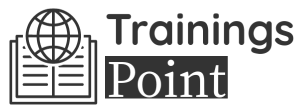Effective onboarding gives new hires the vital resources to succeed in their job and the organization including policies, tools, and a collegial network.
Through a well-designed onboarding program, new employees feel welcomed, valued, and part of a team or team.
A strong onboarding process communicates the organization’s culture, mission, and values.
Best practices in onboarding generate the new employee’s understanding and buy-in for the organization’s procedures, goals, structure, and customers.
Well-designed onboarding programs emphasize the new hire’s job responsibilities and performance benchmarks.
WHY SHOULD YOU ATTEND?
This webinar is designed to communicate successful, relevant, proven onboarding methodologies, based on research and data. These will enhance existing onboarding processes towards heightened performance, engagement, and retention.
AREA COVERED
Develop an effective and thorough onboarding program that fits their new hires’ and organization’s needs:
- Provide a welcoming atmosphere including opportunities to network and socialize.
- Introduction to the organization’s mission, values, history, and culture.
- Meeting teammates, important colleagues, and key stakeholders.
- Give thorough training on policies, procedures, and technology.
- Establish an understanding of the job description, performance goals, and metrics.
Customize the onboarding experience for both individuals and groups:
- Review and assist the new hire in understanding benefits and total compensation, and making decisions in this regard that work for the individual.
- Establish work allies through a mentorship or buddy program and affinity groups.
- Provide flexibility in the onboarding schedule.
- Accommodate inclusive work styles, including schedules, childcare, and remote options.
- Employ diverse training methods such as group and break-out sessions, online opportunities, and one-on-one coaching.
- Create safe and supportive situations for the sharing of backgrounds, experiences, feedback, and points of view.
Communicate with new employees with both clarity and in diverse forms of messaging media:
- Speak in a polite, sensitive, and discreet manner.
- Be mindful of tone, phrasing, biases, competitiveness, and perceivable microaggressions.
- Avoid unnecessary jargon and technical terms.
- Utilize multiple forms of communication including spoken, paper, email, video forums, and in-person.
- Be attentive to the new hire through frequent check-ins, feedback, suggestions, and progress meetings.
Enhance new hires’ understanding and buy-in to job responsibilities, performance goals, and outcomes:
- Create a clear and comprehensive written job description that can be utilized to develop a plan for performance goals.
- Create and distinguish for both the new hire and their teammates, differences in job responsibilities.
- Give clear examples of positive behaviors and outcomes.
- Provide performance targets that are measurable, including a desired timeline.
- Schedule time to regularly review progress, and give relevant feedback and helpful suggestions.
Generate a welcoming environment for new employees to feel valued, supported, and part of the organization’s culture:
- Make the new hires’ first day especially welcoming by letting the reception desk and key team members know that they are coming, and at what time.
- Plan for the new employee to be taken to lunch on their first day by their immediate supervisor, office manager, or a teammate.
- In advance of the new hire’s first day, set up their workstation and technology, including the information system dashboard.
- For group orientations, organize a fun, friendly, and useful Orientation Fair with introductions to co-workers, managers, and stakeholders. Include benefit and resource tables, hands-on training, tours, and socializing.
Design a first-year onboarding timeline that moves from initial orientation to reviews, feedback, and development:
- Design an orientation first week that includes introductions to key colleagues, information, and advisement on benefits and total rewards. Review and gain signatures of the employee handbook, and contract.
- During the first month, conduct weekly check-ins between the immediate supervisor and new hire to review job responsibilities, celebrate achievements, and clarify policies and procedures, in addition to giving and receiving feedback and solutions.
- Within the first few weeks, establish a mentor or buddy to enhance support, make introductions, and give feedback.
- Establish a schedule of quarterly reviews and coaching sessions between immediate supervisor and new employee to celebrate milestones, acknowledge accomplishments, discuss challenges and solutions, and set goals.
- Plan the new employee’s development training program to be implemented throughout the first year, which will build new skills, insights, relationships, and cultural integration.
LEARNING OBJECTIVES
Attendees of this onboarding webinar will learn :
- How to develop an effective and thorough onboarding program that fits their new hires’ and organization’s needs.
- How to customize the onboarding experience for both individuals and groups.
- How to communicate with new employees with clarity and in diverse forms of messaging media.
- How to enhance new hires’ understanding and buy-in to job responsibilities, performance goals, and outcomes.
- How to generate a welcoming environment for new employees to feel valued, supported, and part of the organization’s culture.
- How to design a first-year onboarding timeline from initial orientation to reviews, feedback, and development.
WHO WILL BENEFIT?
This webinar conveys best practices in onboarding to human resource professionals, hiring managers, team and organizational leaders, job seekers and new hires
This webinar is designed to communicate successful, relevant, proven onboarding methodologies, based on research and data. These will enhance existing onboarding processes towards heightened performance, engagement, and retention.
Develop an effective and thorough onboarding program that fits their new hires’ and organization’s needs:
- Provide a welcoming atmosphere including opportunities to network and socialize.
- Introduction to the organization’s mission, values, history, and culture.
- Meeting teammates, important colleagues, and key stakeholders.
- Give thorough training on policies, procedures, and technology.
- Establish an understanding of the job description, performance goals, and metrics.
Customize the onboarding experience for both individuals and groups:
- Review and assist the new hire in understanding benefits and total compensation, and making decisions in this regard that work for the individual.
- Establish work allies through a mentorship or buddy program and affinity groups.
- Provide flexibility in the onboarding schedule.
- Accommodate inclusive work styles, including schedules, childcare, and remote options.
- Employ diverse training methods such as group and break-out sessions, online opportunities, and one-on-one coaching.
- Create safe and supportive situations for the sharing of backgrounds, experiences, feedback, and points of view.
Communicate with new employees with both clarity and in diverse forms of messaging media:
- Speak in a polite, sensitive, and discreet manner.
- Be mindful of tone, phrasing, biases, competitiveness, and perceivable microaggressions.
- Avoid unnecessary jargon and technical terms.
- Utilize multiple forms of communication including spoken, paper, email, video forums, and in-person.
- Be attentive to the new hire through frequent check-ins, feedback, suggestions, and progress meetings.
Enhance new hires’ understanding and buy-in to job responsibilities, performance goals, and outcomes:
- Create a clear and comprehensive written job description that can be utilized to develop a plan for performance goals.
- Create and distinguish for both the new hire and their teammates, differences in job responsibilities.
- Give clear examples of positive behaviors and outcomes.
- Provide performance targets that are measurable, including a desired timeline.
- Schedule time to regularly review progress, and give relevant feedback and helpful suggestions.
Generate a welcoming environment for new employees to feel valued, supported, and part of the organization’s culture:
- Make the new hires’ first day especially welcoming by letting the reception desk and key team members know that they are coming, and at what time.
- Plan for the new employee to be taken to lunch on their first day by their immediate supervisor, office manager, or a teammate.
- In advance of the new hire’s first day, set up their workstation and technology, including the information system dashboard.
- For group orientations, organize a fun, friendly, and useful Orientation Fair with introductions to co-workers, managers, and stakeholders. Include benefit and resource tables, hands-on training, tours, and socializing.
Design a first-year onboarding timeline that moves from initial orientation to reviews, feedback, and development:
- Design an orientation first week that includes introductions to key colleagues, information, and advisement on benefits and total rewards. Review and gain signatures of the employee handbook, and contract.
- During the first month, conduct weekly check-ins between the immediate supervisor and new hire to review job responsibilities, celebrate achievements, and clarify policies and procedures, in addition to giving and receiving feedback and solutions.
- Within the first few weeks, establish a mentor or buddy to enhance support, make introductions, and give feedback.
- Establish a schedule of quarterly reviews and coaching sessions between immediate supervisor and new employee to celebrate milestones, acknowledge accomplishments, discuss challenges and solutions, and set goals.
- Plan the new employee’s development training program to be implemented throughout the first year, which will build new skills, insights, relationships, and cultural integration.
Attendees of this onboarding webinar will learn :
- How to develop an effective and thorough onboarding program that fits their new hires’ and organization’s needs.
- How to customize the onboarding experience for both individuals and groups.
- How to communicate with new employees with clarity and in diverse forms of messaging media.
- How to enhance new hires’ understanding and buy-in to job responsibilities, performance goals, and outcomes.
- How to generate a welcoming environment for new employees to feel valued, supported, and part of the organization’s culture.
- How to design a first-year onboarding timeline from initial orientation to reviews, feedback, and development.
This webinar conveys best practices in onboarding to human resource professionals, hiring managers, team and organizational leaders, job seekers and new hires
Speaker Profile
 Christopher Priore
Christopher Priore
Christopher Priore is passionate about contributing to building welcoming and engaging work and learning environments that foster growth and retention. A current example is his whole-system transformational collaboration at Bergen, New Jersey’s largest Community College, on the President’s Diversity, Equity, and Inclusion Advisory Council. He is also an adjunct professor in the College’s Art Discipline and has served as Interim Assistant Dean of Adjunct Administration. In the latter role, he enhanced the professional development, and connection to the institution’s culture for 800 employees on three campuses 5-20%, having led, planned, and spoken at onboarding orientations and two conferences, along with …
Upcoming Webinars

California Meal and Rest Breaks: What You Dont Know Can Cos…

Responding to EEOC Discrimination Charges-What's Your Busin…

Implementing an Effective Human Error Reduction Program


Conflict Resolution - Prevent, De-escalate, Resolve

When Employees Travel: Wage and Expense Rules Employers Mus…

With Mandatory Paid Leave Gaining Ground Is It Time To Do A…

Female to Female Hostility @Workplace: All you Need to Know

Form 1099-MISC and 1099-NEC Compliance Update 2024

Validation Statistics for Non-Statisticians

The Totally Organized Professional Is All About Outcomes

Why EBITDA Doesn't Spell Cash Flow and What Does

GAMP5, Second Edition and Alignment with Computer Software …

Project Management for Non-Project Managers - Scheduling yo…

Sunshine Act Reporting - Clarification for Clinical Research

Understanding the Math of HR… So You Can Show How HR Impact…

FFIEC BSA/AML Examination Manual: What Compliance Officers …

How to Address ISO's New Climate Change Requirements

I-9 Audits: Strengthening Your Immigration Compliance Strat…


Re-imagine Finance & Accounting Made Simple. Three Webinars…

Stay Interviews: A Powerful and Low-Cost Employee Engagemen…


How To Conduct An Internal Harassment And Bullying Investig…


Effective Onboarding: How to Welcome, Engage, and Retain Ne…

Managing Toxic & Other Employees Who Have Attitude Issues


Analytical Method Validation Under Good Laboratory Practic…

Do's and Don'ts of Documenting Employee Behaviour, Performa…

Do's and Don'ts of Giving Effective Feedback for Performanc…

Onboarding New Hires: Leverage the Potential of Artificial …

Project Management for HR, Administrative Professionals, an…

Tattoos, hijabs, piercings, and pink hair: The challenges …

Using Behavior Based Interviewing for Finding the Best Matc…

How to Document Employee Discussions and Why it is Important

Stressed Out: How to Handle Conflict, Difficult People and …

Harassment, Bullying, Gossip, Confrontational and Disruptiv…

Best Practices for Working With Vendors and Suppliers

Understanding the Artificial Intelligence Landscape

Marketing to Medicare or Medicaid Beneficiaries - What You …

Accounting For Non Accountants : Debit, Credits And Financi…

Principles & Practices for the Cybersecurity of Legacy Medi…

Independent Contractor vs. Employee New Rule Issued by The …

Ultimate Persuasion Strategies! - Secret Influence Tools & …

Kicking your Employee Retention Efforts into Overdrive: Sta…
